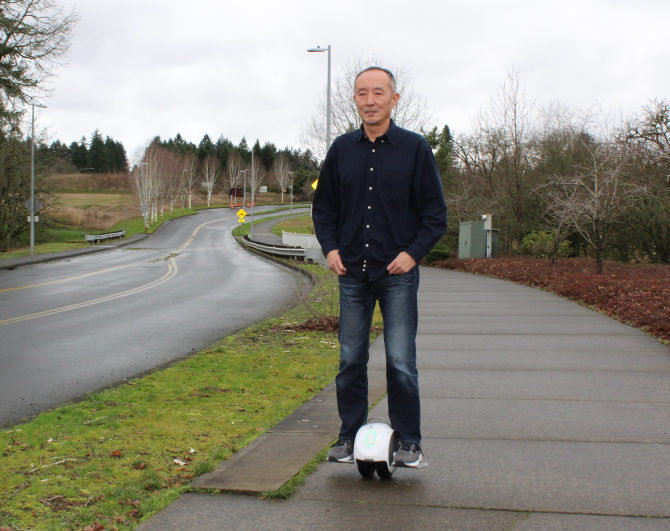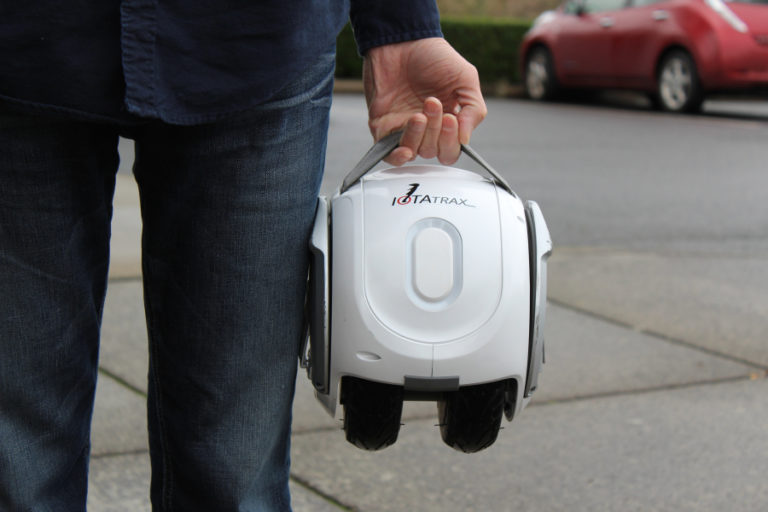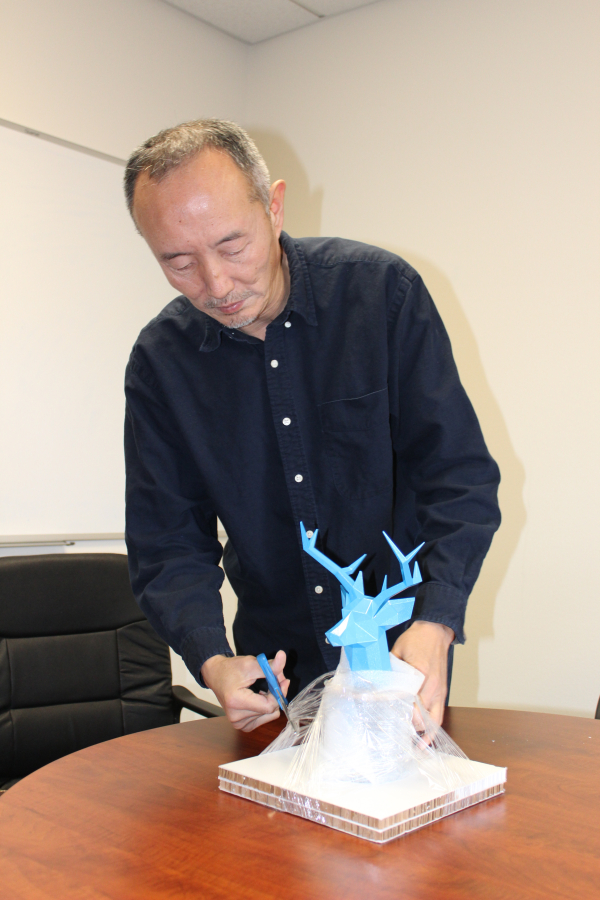Inventor Shane Chen is floating down the sidewalk outside his Inventist office in the Camas Meadows Corporate Center, his latest creation — the IOTAtrax, an electric-powered, kettlebell-shaped riding device billed as a creative and practical solution to commuters’ “last mile” problem — tucked between his feet.
He zips past a jogger before turning around and flying back toward his starting point. Leaning back, Chen comes to a sudden, but still smooth, halt and hops off the self-balancing IOTAtrax.
“It is easy to learn,” Chen says of his newest riding creation. “You lean forward to move forward. You lean back to stop. You lean to the side to turn. It’s very natural … like running.”
For commuters, especially those living in regions like Asia and Europe, where public transportation is a more popular option, the IOTAtrax could be a simple solution for maneuvering that “last mile” between home or office and the closest train or bus stop.
“I wanted to help with traffic problems,” says Chen, 61, an environmentalist who drives a fully electric-powered car and has been trying to create an electric-powered device that would be fun to ride and convenient for commuters hoping to ditch their gas-guzzling automobiles. “I wanted to help people ride instead of drive.”






